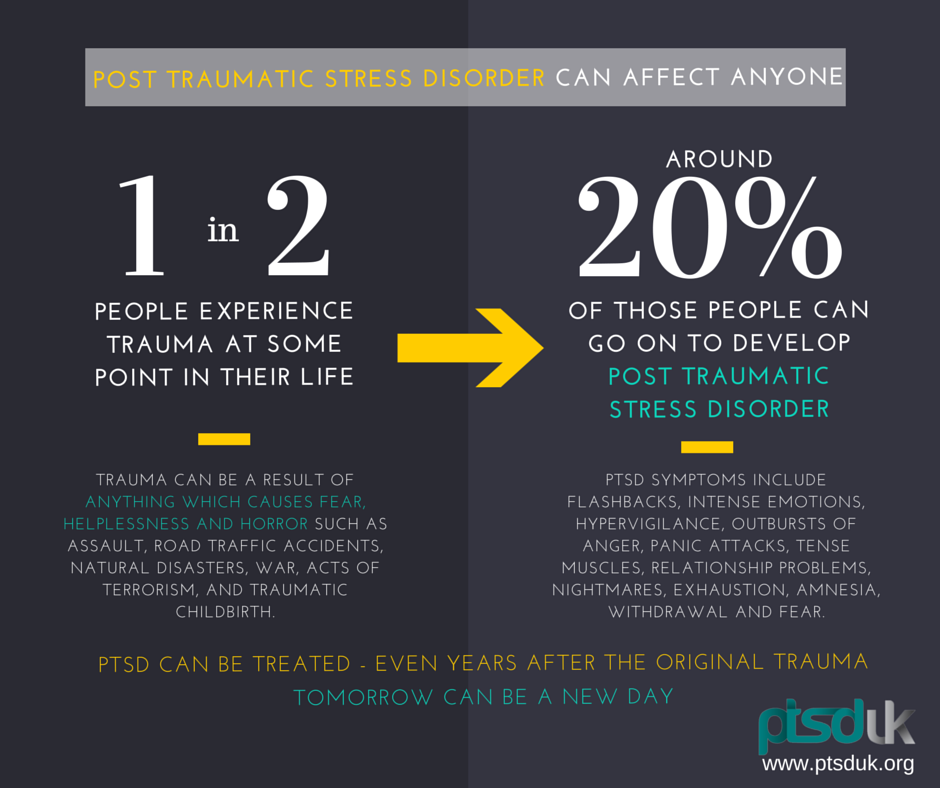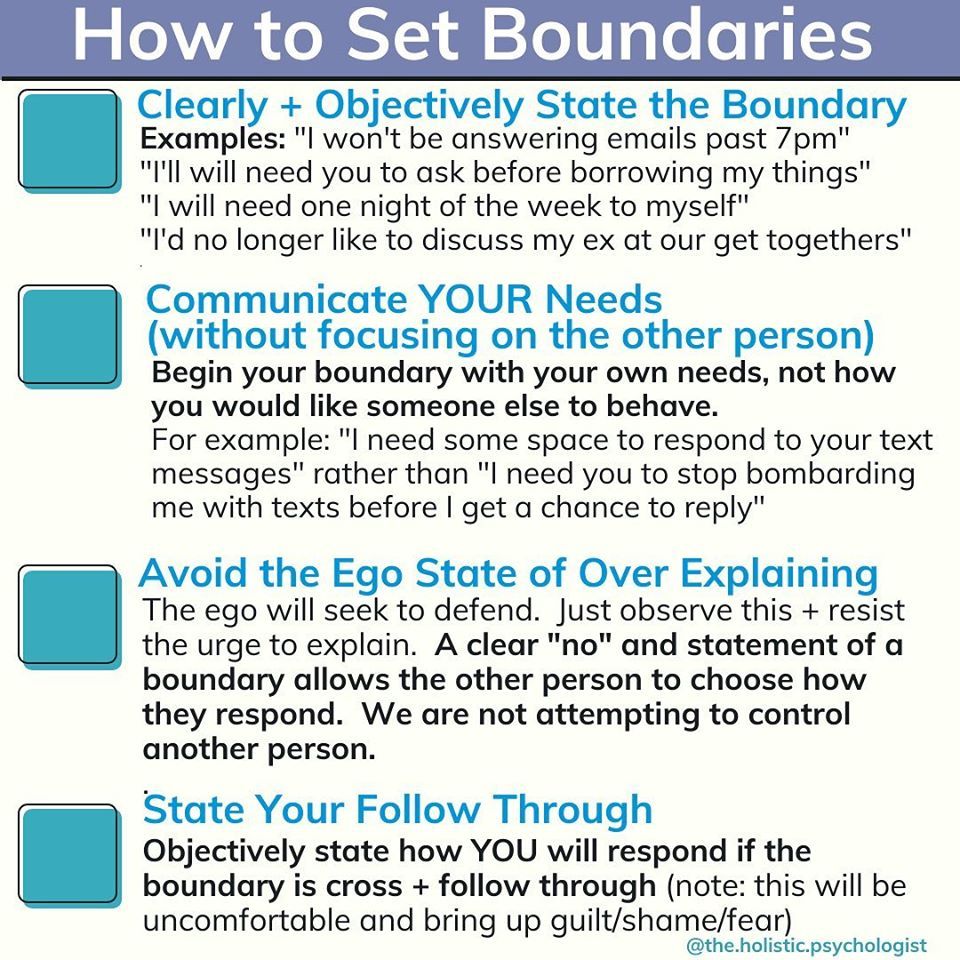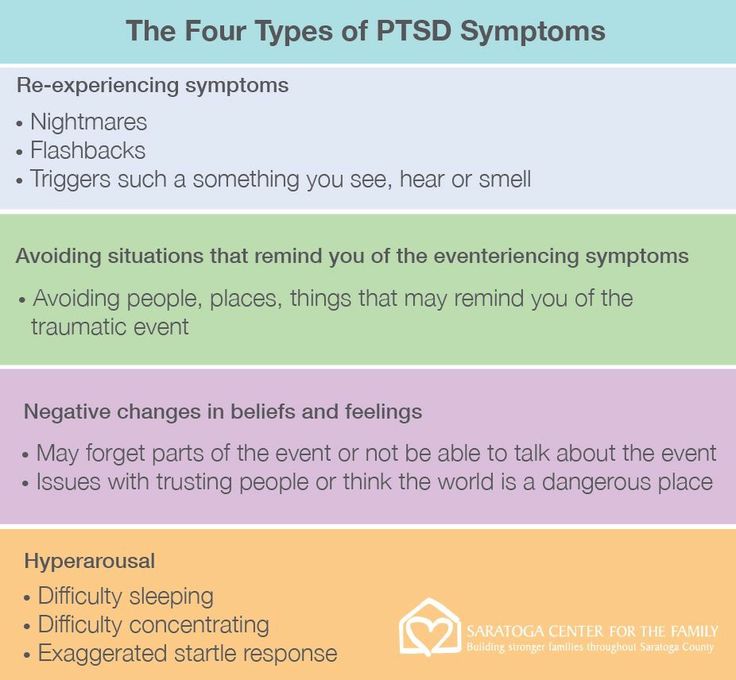Acute Stress Disorder Vs Ptsd
Acute Stress Disorder and PTSD are not as different as they may appear. Specialists will generally diagnose both disorders following a traumatic event or stressor. Additionally, they are diagnosed within the same age range and share identical symptoms. Even though both disorders occur following a traumatic event, they differ in their timeline of symptom longevity.
Therapists can not diagnose an acute stress disorder vs. PTSD until an individual has experienced PTSD-like symptoms for at least three days. These symptoms should begin to decrease or stop around 30 days. Suppose these symptoms continue to occur regularly after a month with no decrease. In that case, a full-fledged PTSD diagnosis is then appropriate. It is estimated that half of the population of individuals diagnosed with PTSD initially were observed to be having symptoms of an acute stress disorder.1
What Are The Different Types Of Ptsd
Post-traumatic stress disorder¹ is a condition that develops after someone has experienced a distressing or traumatic event. These events are typically scary, shocking, unpleasant, dangerous, or harmful.
Some people find it challenging to overcome such trauma. When someone struggles to cope for quite some time after the event, they could be diagnosed with PTSD.
Have you considered clinical trials for Post-traumatic stress disorder ?
We make it easy for you to participate in a clinical trial for Post-traumatic stress disorder , and get access to the latest treatments not yet widely available – and be a part of finding a cure.
What Can I Expect
To receive medications for PTSD, you will need to meet with a provider who can prescribe these medications to you. Many different types of providers, including your family provider and even some nurses and physician assistants, can prescribe antidepressant medications for PTSD. You and your provider can work together to decide which antidepressant medication may be best for you.
In general, the 4 different SSRIs and SNRIs listed above appear to work equally well for PTSD. Once you fill your prescription, you will begin taking a pill at regular time each day. It may take a few weeks before you notice the effects of the medication. It is important to continue to take it even if you do not notice changes right away. You will meet with your provider every few months or so. Your provider will monitor your response to the medication and change your dose, if needed.
Video
Recommended Reading: Can You Get Disability If You Have Never Worked
Ptsd And Substance Abuse Are Closely Related
People who have developed PTSD are five times more likely than people without PTSD to develop a substance use disorder. A 2008 study reported that 50 percent of people living in inpatient substance abuse treatment facilities will meet the criteria for co-occurring PTSD. Another study reported that people with PTSD are reportedly 14 times more likely to struggle with addiction.
Many people who develop problems with alcohol or drugs do so because they are self-medicating PTSD symptoms however, abusing substances will make symptoms of any mental illness, including PTSD, much worse. Additionally, abusing drugs or alcohol can increase the risk of suffering a traumatic event, like abuse or an accident, which increases the risk of developing PTSD or experiencing increased symptoms.
Veterans are one of the most studied demographics who struggle with PTSD and co-occurring drug or alcohol abuse. One study examining veterans three to four months after returning from deployment found that 27 percent abused alcohol and a significant association between how life-threatening combat was and the rate of alcohol misuse. Those who experienced more severe combat situations had 93 percent higher odds of screening positive for alcohol abuse. Among Vietnam-era veterans, 41.4 percent were found to have both a substance use disorder and, later, PTSD.
People who struggle with co-occurring PTSD and substance abuse are more likely to experience other issues, including:
Eye Movement Desensitization And Reprocessing

Developed specifically for PTSD sufferers, EMDR is an integrative psychotherapy treatment. Its been scientifically proven to help treat victims of trauma.
With EMDR, youre guided by a trained therapist who desensitizes you to your triggers. The therapist may lead you through a set of eye movements, finger-tapping, or other forms of stimulation to shift focus away from your trauma.
Also Check: Can Child Support Be Taken From Va Disability In Texas
What Is The Difference Between Physical And Emotional Trauma
You may have heard of ‘physical trauma’ or ’emotional trauma,’ as these common terms describe the trauma. Specialists also refer to emotional trauma as ‘psychological trauma.’
While these aspects of trauma sound separate, it is possible for you to experience physical and emotional trauma at the same time.
What Is The Difference Between Type 1 And Type 2 Trauma
Some experts¹² may also classify trauma as type 1 or type 2. Type 1 refers to a trauma from a single incident, whereas type 2 refers to repeated or prolonged trauma.
Type 1 trauma is similar to acute trauma, and type 2 is similar to chronic trauma. However, when experts use these terms, they generally discuss abuse-related trauma.
It’s important to note that this trauma classification is not widely accepted. Because of this, some medical professionals may avoid using it.
Read Also: Social Security Office Fredericksburg Va
What Is Complex Ptsd
The main symptoms of PTSD and complex PTSD are the same. Complex PTSD is sometimes known as c-PTSD, or CPTSD. If you have complex PTSD, you may have extra symptoms such as:
- issues with keeping a relationship,
- finding it difficult to feel connected to other people,
- a belief that you are worthless with deep feelings of shame, guilt or failure that can be related to the trauma, and
- difficulty controlling your emotions.
Youre more likely to develop complex PTSD if your trauma has been an ongoing event. Or series of different traumatic events. The trauma might be very threatening or frightening. Most commonly from a trauma which you werent able to escape from such as:
- a long period of domestic abuse, or
- a long period of sexual or physical abuse as a child or adult.
Federal Framework On Posttraumatic Stress Disorder
The Federal Framework on Posttraumatic Stress Disorder: Recognition, Collaboration and Support connects and builds on existing federal efforts. It focuses on occupation-related PTSD, but also acknowledges other populations affected by PTSD.
The Framework was developed to help:
- improve tracking of PTSD and its economic and social costs
- promote and share guidelines and best practices for diagnosis, treatment and management of PTSD and,
- create and distribute educational materials.
The Framework will be used to:
- strengthen knowledge creation, knowledge exchange, and collaboration across the federal government, and with partners and stakeholders
- inform practical, evidence-based public health actions, programs and policies and,
- reduce stigma and improve recognition of the symptoms and impacts of PTSD.
A review of the effectiveness of the Framework will be prepared within five years of its publication. The review will include a progress update and highlight new initiatives and their results.
Read Also: Vietnam Veterans Of America Pick Up Donations
Beyond Treatment: How Can I Help Myself
It may be very hard to take that first step to help yourself. It is important to realize that although it may take some time, with treatment, you can get better. If you are unsure where to go for help, ask your family doctor. You can also check NIMH’s Help for Mental Illnesses page or search online for mental health providers, social services, hotlines, or physicians for phone numbers and addresses. An emergency room doctor can also provide temporary help and can tell you where and how to get further help.
To help yourself while in treatment:
- Talk with your doctor about treatment options
- Engage in mild physical activity or exercise to help reduce stress
- Set realistic goals for yourself
- Break up large tasks into small ones, set some priorities, and do what you can as you can
- Try to spend time with other people, and confide in a trusted friend or relative. Tell others about things that may trigger symptoms.
- Expect your symptoms to improve gradually, not immediately
- Identify and seek out comforting situations, places, and people
Caring for yourself and others is especially important when large numbers of people are exposed to traumatic events .
Treatment For Comorbid Ptsd
Treatment for this type involves having a multi-disciplinary care team to tackle managing multiple diagnoses of co-occurring disorders simultaneously.
The order for treating comorbid PTSD disorders typically follows:8
- Receiving substance treatment to ensure they can be sober and engage with working with an individual therapist.
- Starting prolonged exposure therapy to decrease hypervigilance, anxiety levels, and anger reactions to reminiscent situations of trauma, such as combat and military life.
- Engaging in cognitive therapies to process the negative thoughts and beliefs that influence symptoms of depression or other co-occurring mood disorders.
Recommended Reading: Can You Get Social Security Disability If You Have Copd
Where To Get Help
Treatment options are available to help with PTSD and related symptoms. However, it may be challenging to know how to start. Finding help can begin with locating a therapist and meeting with a primary care doctor. Locating a therapist can sound stressful, especially when you or a loved one may be dealing with the symptoms above, but it is possible to attain post-traumatic growth!
You can begin the search by locating a therapist , psychologist , or psychiatrist who may be able to work with trauma-focused issues and see if you are a good fit. Choosing Therapys online directory, where you can filter for specific preferences on demographic, cost, specialty, and cost, can help you gain all the information you may need to help you choose a therapist initially. You can also research online psychiatrists who can better assist you find medications that are right for you.
Example Of Comorbid Ptsd

Many veterans returning from combat deployment have family members and friends that observe significant comorbid PTSD symptoms with other disorders such as major depression and substance use disorders.
Without treatment, comorbid PTSD can make it impossible for some veterans to maintain employment, even when working with other veterans who may also be managing their PTSD.
Recommended Reading: What If Someone Gets Your Social Security Number
Other Therapies For Treating Many Types Of Ptsd Include:
- Dialectical Behavior Treatment
- Eye Movement Desensitization and Reprocessing therapy
- Psychodrama Therapy
- Meditation and Mindfulness
Additionally, treating any other co-occurring illnesses, such as depression, anxiety, or addiction to drugs or alcohol, is a key to achieving long lasting recovery from the different types of PTSD.
-
Struggling with mental health issues like Post-Traumatic Stress Disorder can be a lonely and
Summit Malibu
Summit Malibu is the longest running boutique addiction treatment center in Malibu, California. Our residential rehab program offers dual diagnosis drug and alcohol addiction treatment to heal the mind, body, and soul. Summit Malibu is Joint Commission Accredited and licensed by the California Department of Health Care Services.
Emotional Symptoms Of Ptsd
The emotional symptoms of PTSD are depression, worry, intense guilt and feeling emotionally numb. Another symptom is anhedonia, which is characterized by a loss of interest in formerly enjoyable activities. The National Center for Biotechnology Information states that anhedonia plays a part in predicting psychiatric comorbidity, or the presence of more than one psychiatric disorder.
Don’t Miss: How To Get A New Disability Card
Free Brochures And Shareable Resources
- Helping Children and Adolescents Cope With Traumatic Events: This fact sheet presents information on how children and adolescents respond to traumatic events, and what family, friends, and trusted adults can do to help. Also available en español.
- Post-Traumatic Stress Disorder: This brochure provides information about post-traumatic stress disorder including what it is, who develops PTSD, symptoms, treatment options, and how to find help for yourself or someone else who may have PTSD. Also available en español.
- : Help support PTSD awareness and education in your community. Use these digital resources, including graphics and messages, to spread the word about PTSD.
What Does Dissociative Ptsd Look Like
This type of PTSD is common for those who have experienced significant abuse from family or childhood trauma. If untreated, dissociation can lead to a lifetime of lapses in attention and focus, making it difficult for employers, significant others, and friends to interact with them, potentially damaging their access to available support systems.
You May Like: How To Apply For Disability In Illinois
Cognition And Mood Symptoms Include:
- Trouble remembering key features of the traumatic event
- Negative thoughts about oneself or the world
- Distorted feelings like guilt or blame
- Loss of interest in enjoyable activities
Cognition and mood symptoms can begin or worsen after the traumatic event, but are not due to injury or substance use. These symptoms can make the person feel alienated or detached from friends or family members.
It is natural to have some of these symptoms for a few weeks after a dangerous event. When the symptoms last more than a month, seriously affect ones ability to function, and are not due to substance use, medical illness, or anything except the event itself, they might be PTSD. Some people with PTSD dont show any symptoms for weeks or months. PTSD is often accompanied by depression, substance abuse, or one or more of the other anxiety disorders.
What Is Posttraumatic Stress Disorder
Posttraumatic stress disorder is a psychiatric disorder that may occur in people who have experienced or witnessed a traumatic event such as a natural disaster, a serious accident, a terrorist act, war/combat, or rape or who have been threatened with death, sexual violence or serious injury.
PTSD has been known by many names in the past, such as shell shock during the years of World War I and combat fatigue after World War II, but PTSD does not just happen to combat veterans. PTSD can occur in all people, of any ethnicity, nationality or culture, and at any age. PTSD affects approximately 3.5 percent of U.S. adults every year, and an estimated one in 11 people will be diagnosed with PTSD in their lifetime. Women are twice as likely as men to have PTSD. Three ethnic groups U.S. Latinos, African Americans, and American Indians are disproportionately affected and have higher rates of PTSD than non-Latino whites.
People with PTSD have intense, disturbing thoughts and feelings related to their experience that last long after the traumatic event has ended. They may relive the event through flashbacks or nightmares they may feel sadness, fear or anger and they may feel detached or estranged from other people. People with PTSD may avoid situations or people that remind them of the traumatic event, and they may have strong negative reactions to something as ordinary as a loud noise or an accidental touch.
Also Check: How To Disable Insta Account
Challenge Your Negative Thoughts
Negative thoughts are assumed easily but they are really harmful to your condition. So whenever you have a negative thought, ask yourself whether its really true or not. If the answer is no, then try to come up with three positive things about that situation.
For example, you can challenge the thought I am not good enough by thinking of three things you are proud of that show how capable you are. This will help to reduce the power of negative thoughts and give you a more balanced view of yourself and the situation.
What Are The Signs Of Ptsd

The Mayo Clinic mentions several reoccurring symptoms, including fearful thoughts, flashbacks and bad dreams. These symptoms can become problematic in a persons life. Some of the avoidance symptoms include difficulty remembering the traumatic event and avoiding reminders of the experience, such as places, people and objects. Hyperarousal symptoms may also arise, such as feeling tense, being startled easily and having trouble sleeping. While it is normal to experience some of these symptoms after a terrible event, symptoms lasting more than a few weeks may be signs of PTSD.
Recommended Reading: I Need The Number For Social Security
Questions To Ask Your Care Team
In addition to therapy, reaching out to your primary care doctor for therapy referrals and exploring medication options can be helpful. Although it does sound daunting, there are options for PTSD treatment that can reduce the impact of PTSD symptoms on your or a loved ones life.
Essential questions to ask your care team include:
Do You Think You Might Have Ptsd
Experiencing PTSD can be frustrating and overwhelming, especially if you dont know why you are experiencing these symptoms. PTSD is a response to significant trauma. The constant need to avoid the challenging emotions surrounding facets of the trauma and the intrusion of PTSD symptoms can significantly impact and impair your quality of life.
Signs that you might have developed symptoms of PTSD include: 1
- Experiencing, witnessing, or learning about a violent, harmful, or potentially fatal experience, either once or repeatedly.
- Continuous and unwanted intrusive thoughts, memories, and dreams of your trauma.
- Moments where you feel or act like you are in a traumatic event again .
- Experiencing emotional, cognitive, or physical reactions to reminders of your trauma.
- Finding yourself avoiding thoughts, memories, feelings, areas, people, or other things that remind you of the trauma.
- Significant changes in your thoughts and moods, especially with changed and negative beliefs about the world, yourself, or others following traumatic experiences.
- Experiencing negative self-talk or inability to feel happiness or positive emotions.
- Irritable and angry feelings or aggressive behaviors and outbursts.
- Self-harm or reckless behavior than begins following a trauma.
- Hypervigilance and jumping at things that did not startle you in the past.
- Difficulty concentrating.
- Insomnia due to dreams and thoughts of trauma.
Also Check: What Was The Social Security Act
